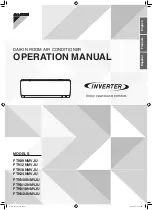
Fig. 7 TOR Wiring
TOR -
The TOR (temperature override device) option
incorporates two thermostats with fixed settings (usually
165°F [74°C] and 350°F [177°C]). The primary sensor
(the sensor with the lower temperature setting) can be
bypassed by an external electrical signal allowing the
damper to reopen until the temperature reaches the
setting of the secondary sensor (the sensor with the
higher temperature setting). When the temperature of the
secondary sensor is exceeded the damper closes and
remains closed thereafter (
Fig. 7
)
The TOR assembly also contains a single pole, double
throw switch used to indicate damper blade position.
The switch provides a positive open or closed signal
when used in conjunction with remote indicator lights.
See
Fig. 7
for wiring of the TOR thermostats and
indicator switches.
Fig. 5 OCI Wiring
Fig. 6 RRL/OCI Wiring
RATINGS (Fig. 4, 5, 6 & 7)
Integral Switch Type:
Single Pole, double throw
Electrical Capacity:
10 Amps, 1/3 hp, 120 or 240 Vac
1/2 Amp, 125 Vdc;
1/4 Amp 250 Vdc
5 Amps, 120 Vac “L” (lamp load)
1.0 Amps, 24 Vac
1.5 Amps, 24 Vdc
Temperature Limit
: 165° F (standard primary sensor)
212° F (optional primary sensor)
250° F (secondary sensor )*
350º F (secondary sensor)*
* based on actuator temperature rating
FSDR-XXX and DFDR-XXX
Blade Orientation
Normal
Axle
30° Off Horizontal (Maximum)
Axle
30°
30° Off Horizontal (Maximum)
Axle
30°
PRV -
The PRV (pneumatic relief valve) option is heat
responsive device used with pneumatic actuators. This
can be used in place of EP switch where a RRL is used.
The PRV activates when temperature in excess of the
temperature of the fusible link are detected. When the
fusible link melts, air from the actuator is exhausted to
close the dampers. Pneumatic actuators are to be piped
per local code.
40













































